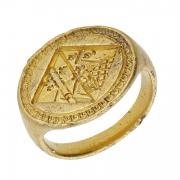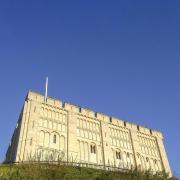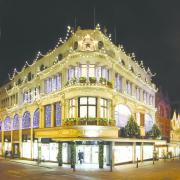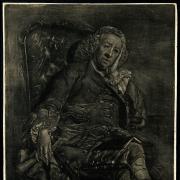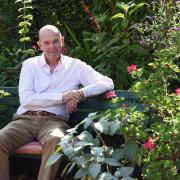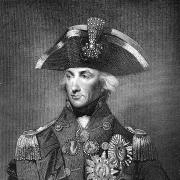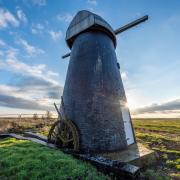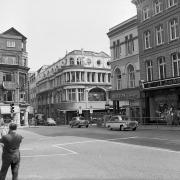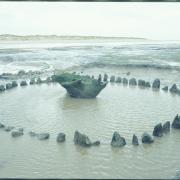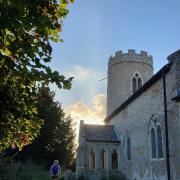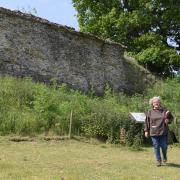Pablo Fanque was a 19th century Evel Knievel famous for leaping, on horseback, lengthways over a carriage complete with horses in its shafts. Norwich born, he was an acrobat and horseman who became the first black circus owner in the country
By Chris Armstrong
Pablo Fanque was the exotic professional name adopted by William Darby. Churchill’s words ‘a riddle wrapped in an enigma’ came to mind almost as soon as I started researching Pablo Fanque.
Churchill was referring to the motives of Russia – plus ça change, but the same could be said of the early life of Fanque. To begin with, although his memorial stone describes him as having been born in 1796, there is a general consensus that he was more likely to have been born in 1810. Although a William Darby was born to his parents in 1796, he died as an infant.
It seems probable that when they had another son, in 1810, they gave him the same Christian names as his deceased sibling – a not unusual practice in those days of high infant mortality. The 1796 thesis depends on the existence of a birth certificate in Fanque’s possession which it seems possible may have been used by him both to disguise the fact that his 1810 birth was recorded in a workhouse and to suggest a more mature age when seeking employment.
Certainly 1810 seems the likelier date and his birth in St Andrew’s workhouse might have been something he wished to disguise, given that his father was described on the 1796 birth data in a respectable role as a butler. The child born in 1810 was baptised on the day of his birth, which usually implies concern that the infant was unlikely to survive.
His father may not have remained a butler but some form of domestic service was a not unusual occupation for a black immigrant at the time. Fanque’s mother was a Norfolk girl, Mary Stamp of Great Ryburgh. She was sufficiently educated to sign her own name on the marriage certificate while his father, John Darby, simply made his mark.
%image(15859125, type="article-full", alt="Pablo Fanque's blue plaque in Norwich")
The confusion of dates continues. Most sources say that, having been orphaned at a young age, he was apprenticed at about the age of 10 to William Batty, a highly successful circus proprietor who was, on his death, to leave a fortune of over £500,000 - equivalent to over £50,000,000 today.
Certainly, 10 was not then an unusual age to become an apprentice and Fanque worked with Batty for some years, but at the date of the suggested apprenticeship Batty would have been only about 20 himself, and he did not become a circus proprietor until 1836 – indeed the first record of him as a circus performer was in 1828, seven years after the suggested date of the apprenticeship.
But whatever the truth of his birthdate, his apprenticeship and his first professional appearance in Norwich (cited by some sources as 1821 and others as 1840) there is no doubt that Pablo Fanque was a quite remarkable athlete and horseman, at some stages a highly successful businessman, and a generous supporter of fellow performers in need.
This last attribute led to the name of Fanque becoming much better known in the 1960s, when John Lennon wrote ‘Being for the benefit of Mr Kite’ having seen a poster in an antique shop advertising a Fanque performance in 1843 to raise funds for Wiliam Kite, a former employee who had fallen on hard times. The song was released on the Sgt Pepper album, but this track was banned by the BBC because some of the words were believed to be a slang expression for heroin.
%image(15859129, type="article-full", alt="The Beatles' song "Being for the Benefit of Mr. Kite!" was apparently inspired by this 1843 poster advertising a show of Pablo Fanque's Circus")
If Fanque had, at birth, seemed fragile enough to demand immediate baptism, then his fragility did not last long. He proved a formidable athlete, and developed a range of skills which were to bring him fame though not, in the long run, fortune.
Initially he seems to have focussed on non-equestrian activities like tightrope walking and acrobatic feats but soon he was displaying extraordinary skills on horseback, and gaining recognition as an exceptional trainer of horses for the circus ring. In 1847 The Illustrated London News reported his performance as one ‘we have not only never seen surpassed, but never equalled’.
Many circuses at the time were travelling shows, spending brief periods in numerous market towns, which they would enter with a parade of animals and tumblers to attract the crowds. The animals were not always fully cooperative – my great grandfather recorded in his diary the occasion when an elephant eluded its keepers in Dereham and was found enjoying the contents of the larder of a house in the town, having demolished the surrounding window in order to insert its trunk to access the store.
In April 1865 his diary entry reinforced the extreme youth of some of the performers telling of a conversation between his daughter and a 10-year-old performer at the circus who was not only an excellent equestrienne but also a tightrope walker and dancer. ‘What a little piece of precocity – a veritable phenomenon’ he wrote, though he did express concerns about the moral hazards of her life.
%image(15859132, type="article-full", alt="The sign outside Pablo Fanque House in Norwich, a student accommodation building")
Other circuses travelled to larger cities, often hiring accommodation in the centre – existing buildings capable of temporary conversion to a ring format, or, in some places, purpose-built circus arenas. One of just two remaining such sites, though not in a major city, is the Hippodrome in Great Yarmouth.
Fanque (he adopted the name in 1828), having been a star attraction for both Batty and the equally distinguished Andrew Ducrow, set up on his own in the early 1840s, mainly touring medium-sized towns like Preston and Warrington. He also toured in Scotland and Ireland but the emphasis was definitely on the industrial Midlands and the North of England.
In March 1848, Fanque’s circus was at Leeds at a purpose-built site, King Charles’s Croft. This had been a circus amphitheatre for well over 50 years and had been a temporary home to many touring companies.
During a performance on March 18 there was a terrible accident, when part of the building collapsed causing many injuries, and one fatality. That fatality was Fanque’s wife, Susannah, who had been looking after the takings in a room directly below a gallery seating about 600 people.
The gallery collapsed and she was struck on the head by falling planks, being pronounced dead at a local hotel to which Fanque had carried her. In the confusion that reigned after the fall, someone managed to make off with the evening’s takings of more than £50.
%image(15859134, type="article-full", alt="Pablo Fanque's grave marker, in a Leeds cemetery")
Fanque was reported to have been devastated by his wife’s death. She was buried a few days later, with great pomp – more than 30 of Fanque’s horses were in the procession, which, reported the Leeds Mercury, was watched by more than 10,000 locals.
His devastation was only of limited duration, because, little more than a week after the accident, the circus had moved on to his next site and, within two months, he had re-married. His new wife, some 20 years younger than himself was Elizabeth Corker, a circus equestrienne, with whom he was to have two children, both of whom – with the children of his first marriage - were to make careers in the circus.
His business career had its ups and downs. Among the investors who helped to support his business were Norwich brewer Richard Bullard, and William Batty, his former apprentice master. But all did not go well – Fanque ran into serious financial problems and was declared bankrupt in 1858.
Batty who had replaced Bullard as an investor, had negotiated an early version of ‘sale and leaseback’, buying Fanque’s circus and leasing it back to Fanque to run. Fanque, not a careful man had, it transpired, not kept proper - or even improper - accounts and had continued to pledge the business assets as security even after he had sold them.
The court found that his affidavits about his financial situation amounted to perjury and there were other questionable transactions. Despite this he was able to continue to run his shows in some of the smaller venues until the mid-1860s,
%image(15859136, type="article-full", alt="Pablo Fanque House in Norwich")
Sadly, when he died, in 1871 he was living in poverty in a Stockport pub. His widow was left penniless and when sued by one of her husband’s creditors, had to rely on the personal generosity of her lawyer to settle a £5 debt.
Fanque may have been an incompetent administrator and a less than reliable money man, but he was not just a fine athlete and equestrian, he was also a man of ambition whose early successes in establishing his business should not be overlooked.
The secrets of his success were both the excellence of his shows and his own genius on the public relations front. He recognised the need to promote his performances and used posters giving advanced notice of his appearances very effectively.
He also often donated generously to local charities in the areas he visited, and sometimes discounted the ticket costs for those in need. Further he frequently arranged shows for the benefit, not just of Mr Kite, but for others in the same profession who had fallen on hard times. His amiability was not, however, universal. Several of his apprentices absconded, unhappy with their treatment, even his own son did so, more than once!
But his achievement, in an age when racial prejudice was rife, was immense. To become, as he did, the widely recognised proprietor of a much-loved circus at a time when such entertainments were hugely popular was no mean feat for the Norwich workhouse boy.
For anyone interested in learning more of this remarkable man and the fascinating story of the Victorian enthusiasm for the circus a good place to start would be Pablo Fanque and the Victorian Circus, by Gareth H H Davies (Poppyland, 2017).





